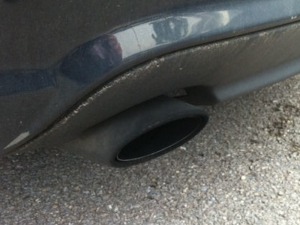Diesel cars lagging behind HGVs on harmful emissions, report says
The latest heavy goods vehicles are emitting less than half the NOx of diesel passenger cars, despite significantly higher fuel consumption, according to a briefing by the International Council on Clean Transportation (ICCT).

HGV exhaust after-treatment systems were proved to be significantly more effective than in passenger cars.
Drawing on research from independent organisations and EU member state governments, the report highlights a stark difference between the performance of the urea-based exhaust after-treatment systems used on all HGVs – known as selective catalytic reduction (SCR) – and the lean NOx traps still utilised by many lighter-duty vehicles.
On average, the sample group of Euro 6 compliant passenger cars recorded average NOx emissions of 480-560mg/km. That’s six or seven times higher than the 80mg/km limit mandated by the standard.
The sample of 24 Euro 6 HGVs performed much better. An average NOx emission figure of 210mg/km was half as much as the passenger cars, despite CO2 emissions being five times higher. As CO2 is related to fuel consumption, this shows – per litre of diesel – that after-treatment systems for Euro 6 HGVs are ten times more effective at removing NOx from exhaust emissions than a Euro 6 diesel passenger car.
SCR, which uses ammonia as a catalyst to break NOx down into harmless nitrogen and water, is set to become more common among passenger cars with the latest Euro 6c standard, which comes into force this September.

















